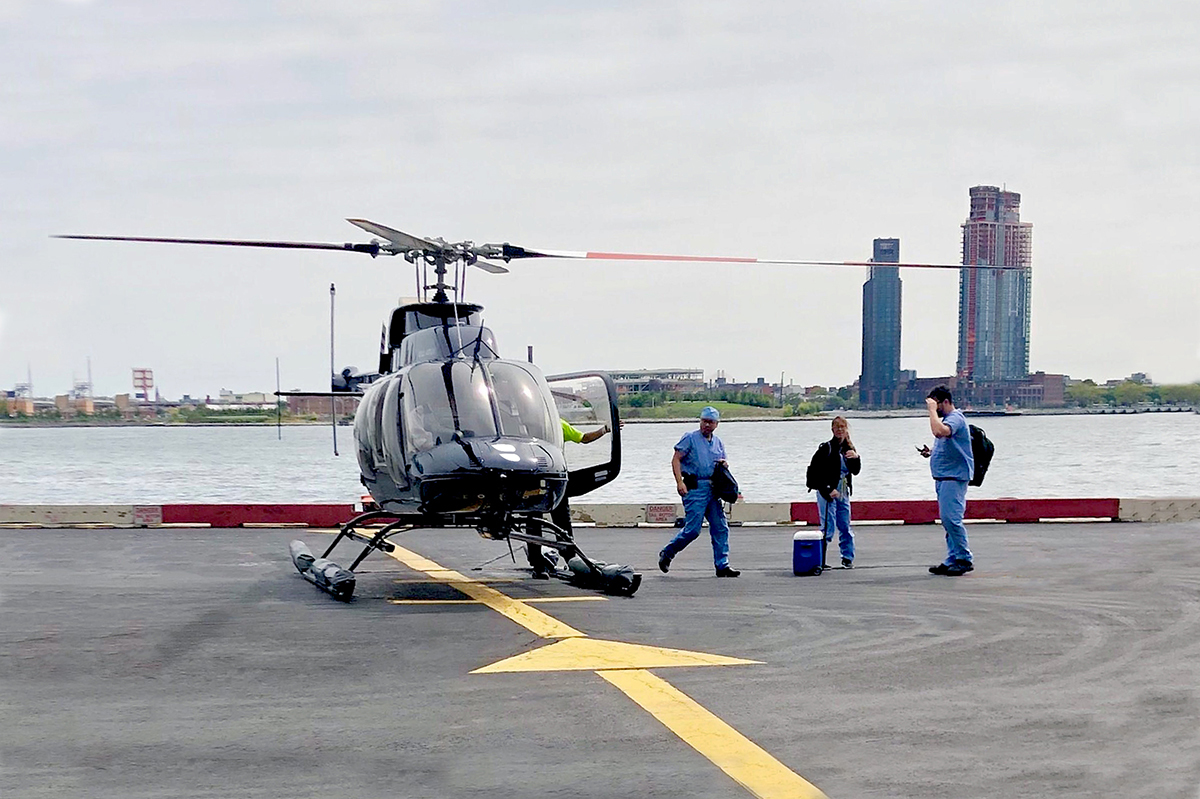‘Electric aircraft could replace cars in the organ transportation sector’

In 1987 the Metropolitan Police released dashcam footage of officers trying to get a liver from Stansted Airport to a hospital in the centre of London within 35 minutes. With the help of motorbike outriders and policeman at every traffic light and roundabout they managed it – averaging 60mph on a Friday. But even then it was a close call.
Now, Will Heyburn, chief financial officer, Blade Urban Air Mobility believes electric aircraft can replace cars for similar missions. “In organ transportation, electric aircraft really can replace cars, because it is such a mission critical trip,” he tells Helicopter Investor.
He says Blade’s organ logistics business, Blade MediMobility, is set to become the largest “comprehensive coast-to-coast platform in organ transportation in the US,” following a $23m acquisition of organ logistics company Trinity Air Medical earlier this month.
“It is a direct hit for our strategy in terms of trying to find all the use cases for electric aircraft that exist and get ourselves in the position to be the market leader,” says Heyburn.
Blade is already helping reduce lead times, from what would have been one- to two-hour drives, to five-minute flights with a helicopter. And when it concerns moving a heart, this will impact the outcome greatly. “We have an opportunity to save a tremendous amount for hospitals,” he adds.
And this has become increasingly important, according to Seth Bacon, CEO of Trinity, who will become CEO of Blade MediMobility. “Recent advances in organ preservation technology have resulted in consistently increasing demand for point-to-point organ air transport over longer distances,” he says.
Heyburn and Blade think small cargo drones can be instrumental. “More and more hospitals are beginning to trust local surgeons to do the actual procurement – remove the organ for them – and then they shift the organ by itself. We think that could potentially come much sooner than the passenger eVTOL operations,” he says. Zipline, which delivers urgent medical supplies including blood, has completed over 200,000 autonomous drone deliveries.
Since both Blade and Trinity do not own or operate their fleets, the companies say they will be able to expand quickly without spending too much cash.
Blade and Trinity are working together already. Heyburn said the new missions will use Blade’s existing fleet – which is already flying in the daytime – to carry out more flights at night.
In the medical transportation business, operators could end up spending a lot of time on standby which translates to higher fixed costs. However, Blade is hoping to leverage its existing fleets to give its operators the best costs.
“The more volume they are getting from Blade, the less expensive it is for them to provide us with the flight hours. So, the fact that we can combine that retail business with the medical business just makes everything less expensive for the operator and Blade,” says Heyburn.
“Trinity has a phenomenal team under Seth Bacon and Scott Wunsch. They are running on all cylinders so we’re learning a lot from them and we think the combined businesses are going to be that much better.”
The possibility for an unmanned drone carrying cargo could be sooner than 2024, says Heyburn, when Blade’s partner Beta Technologies is expecting to enter service.








